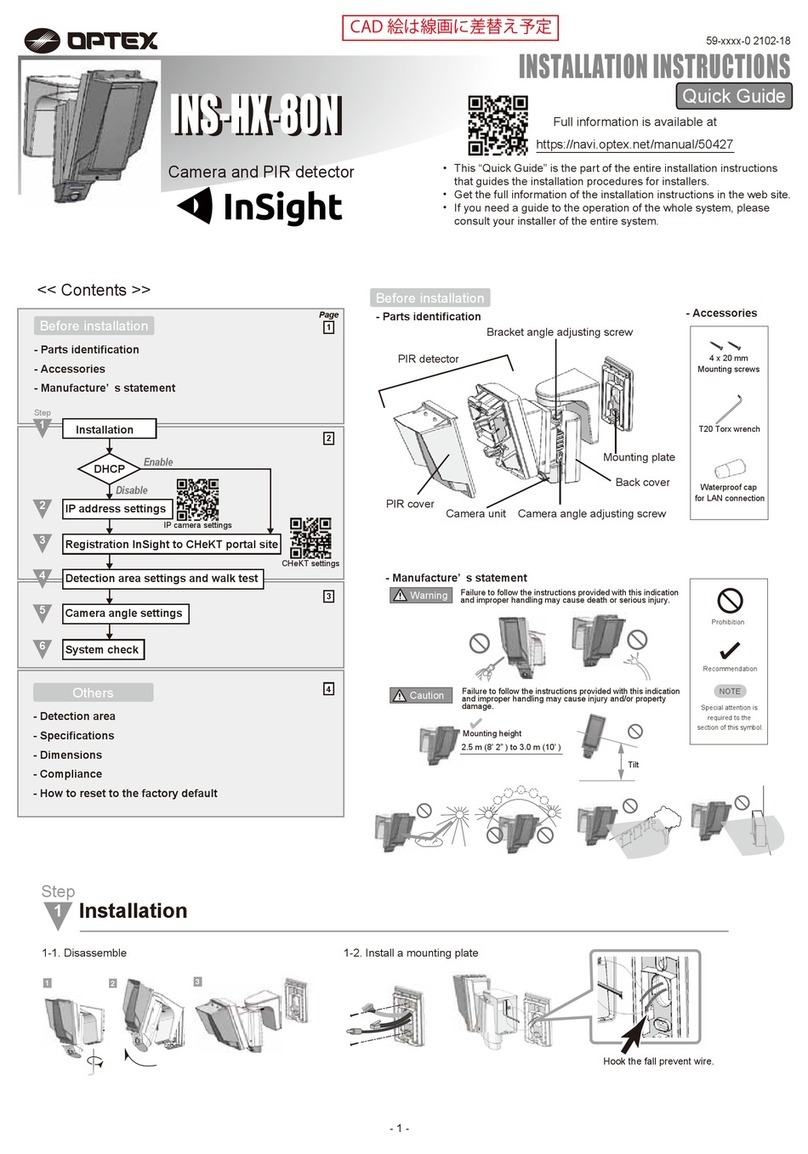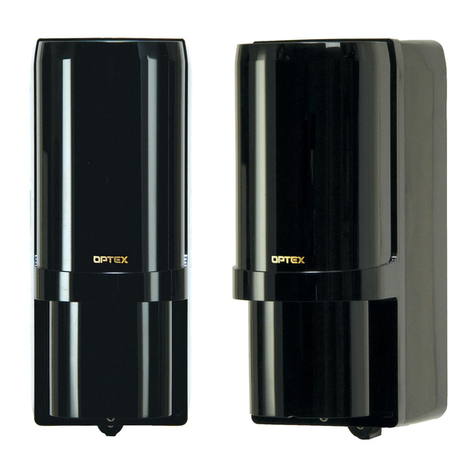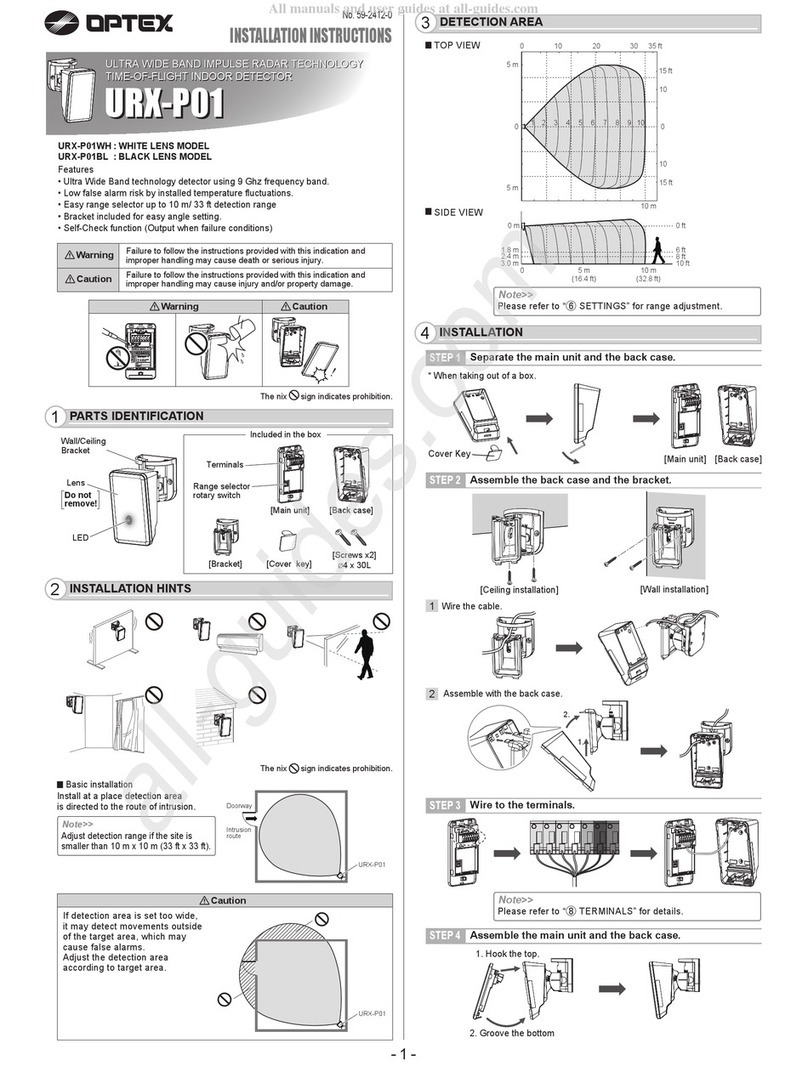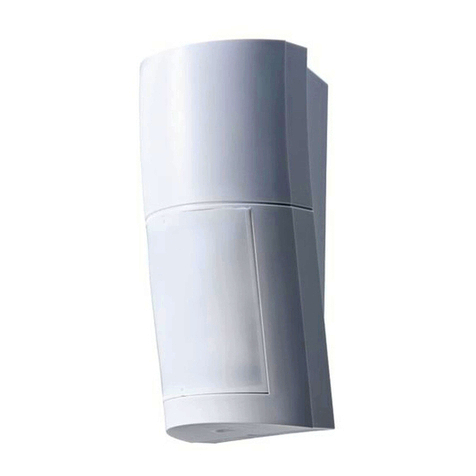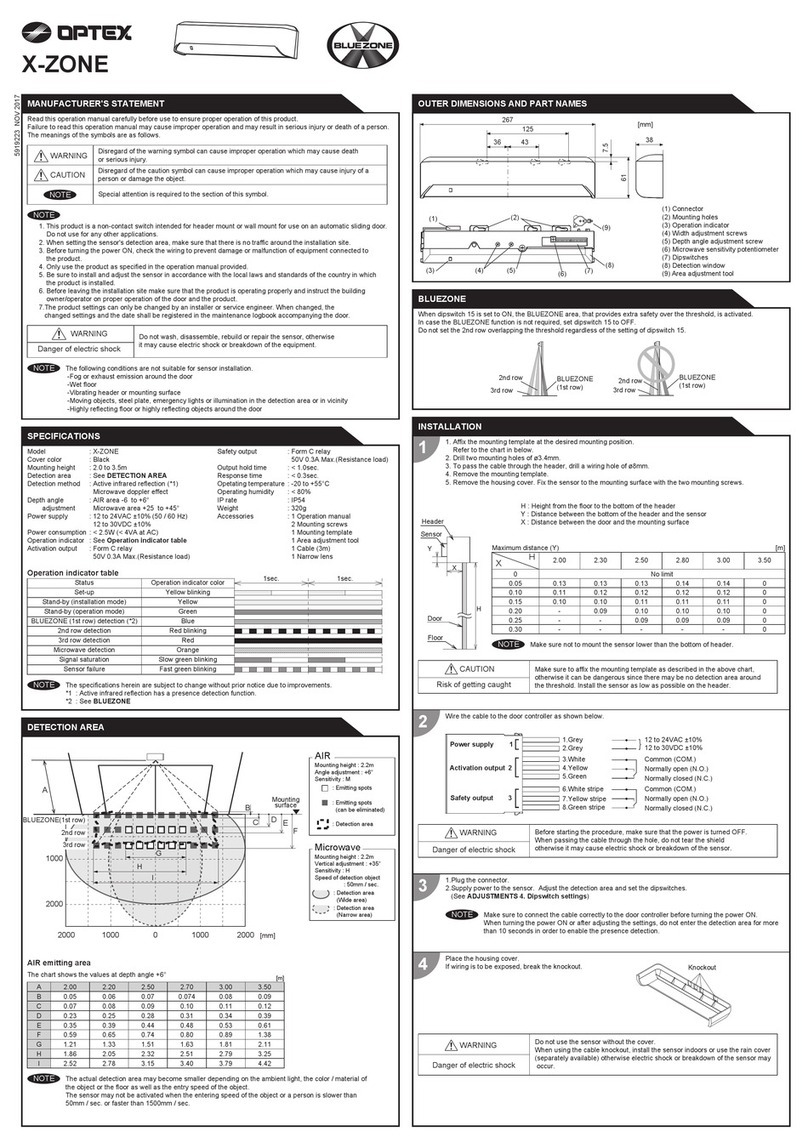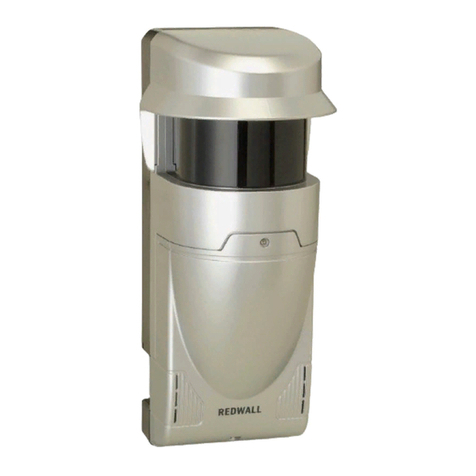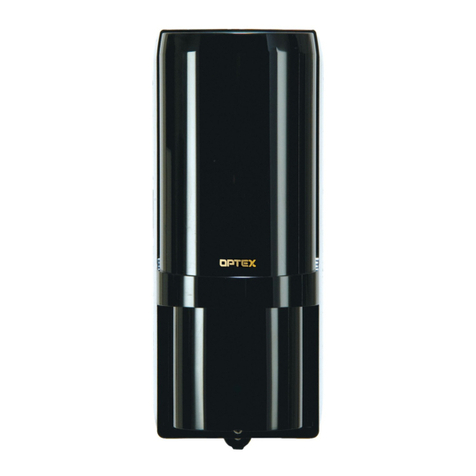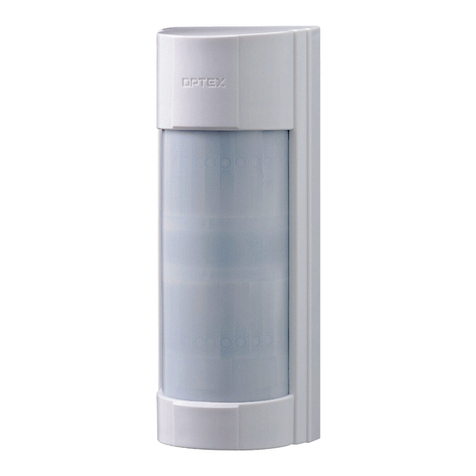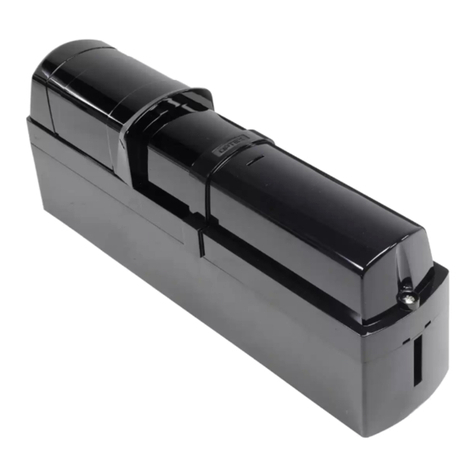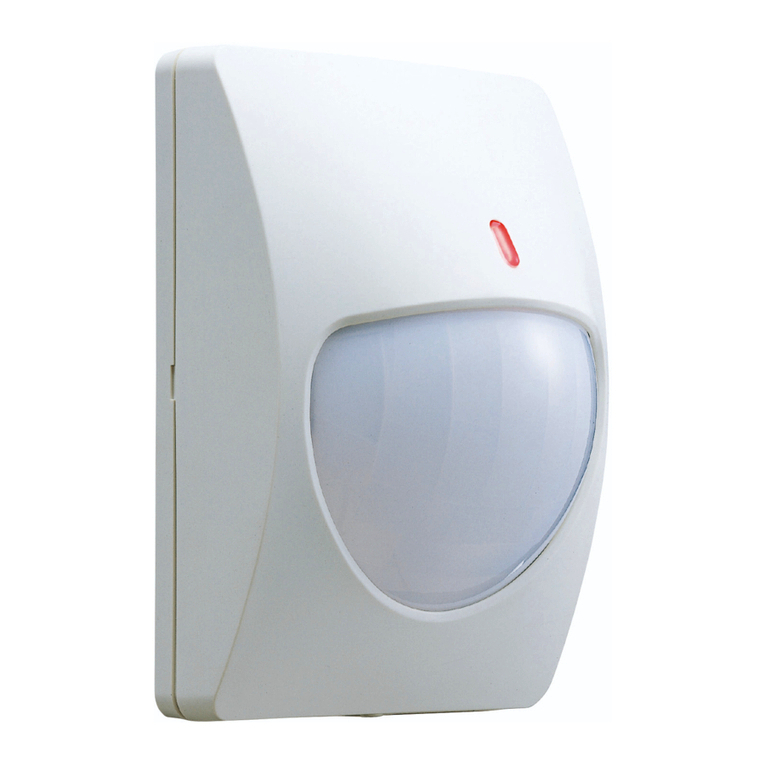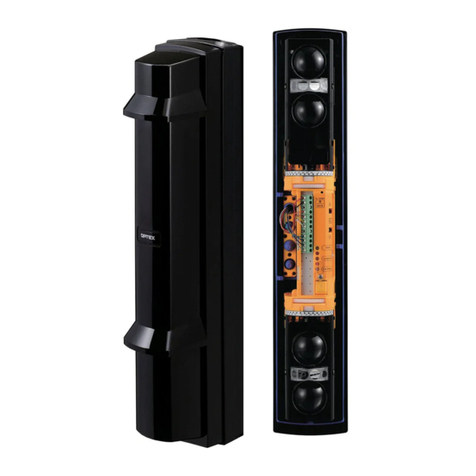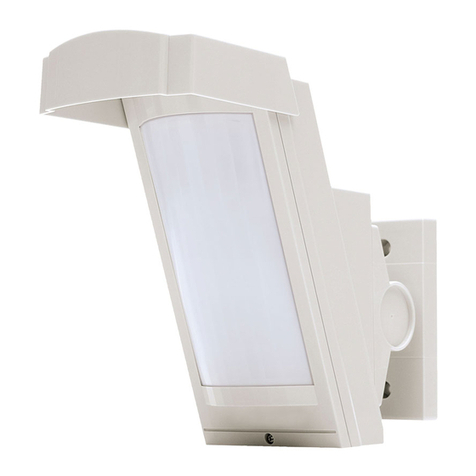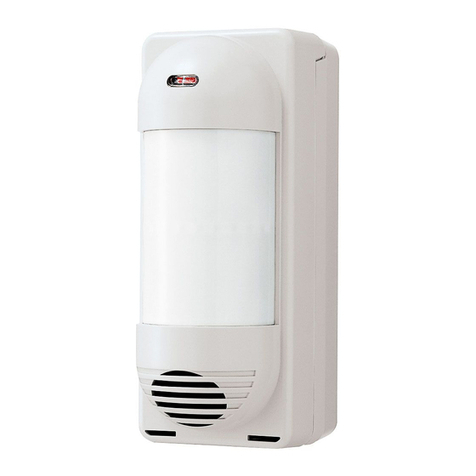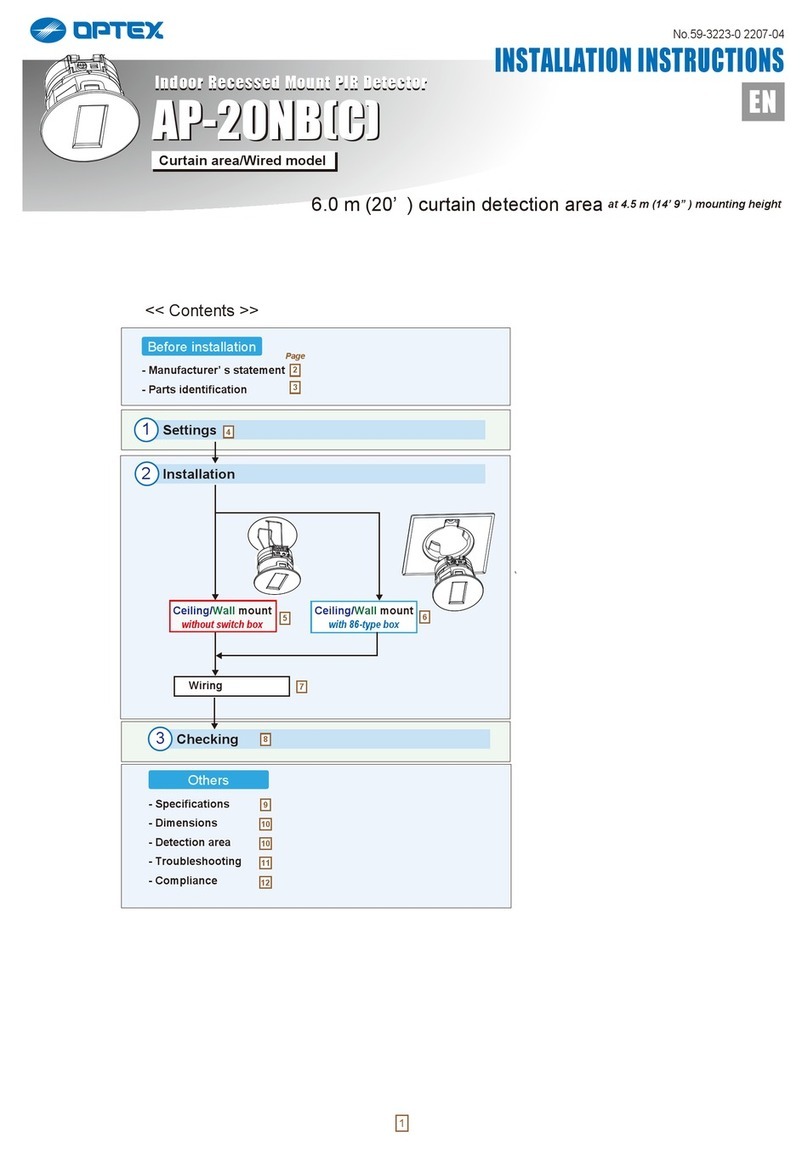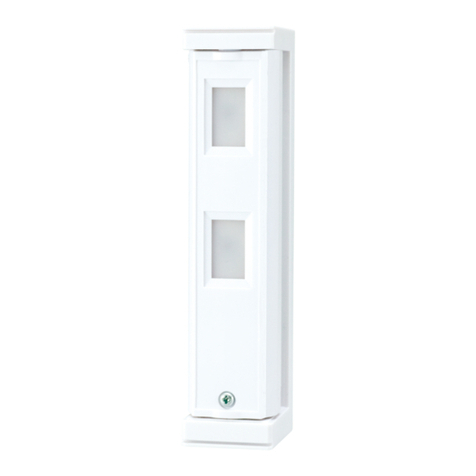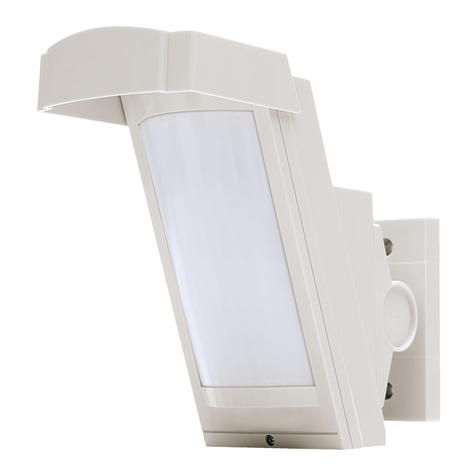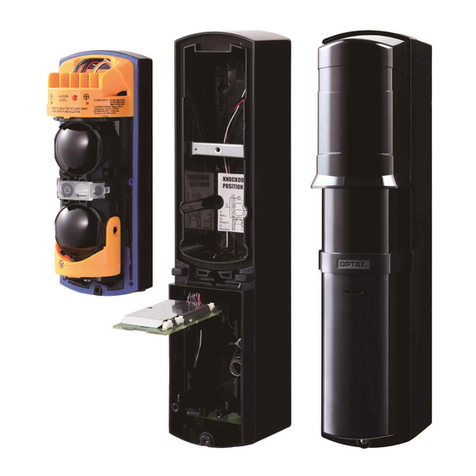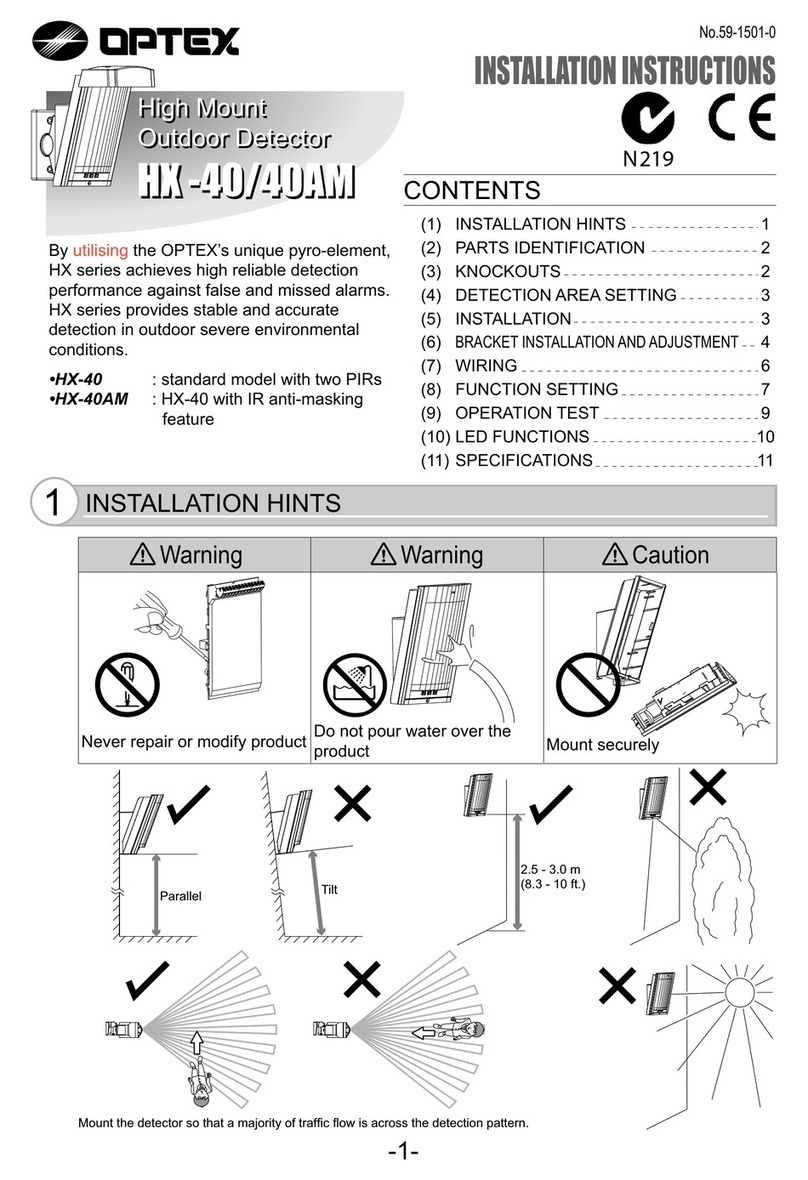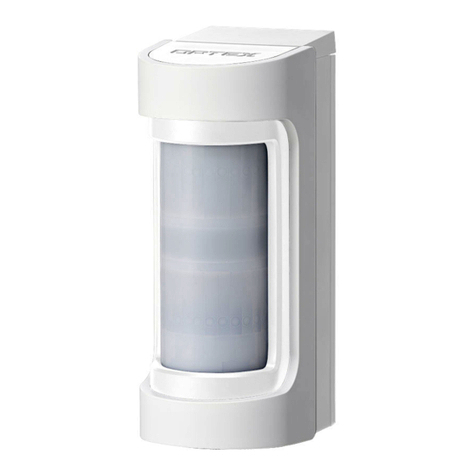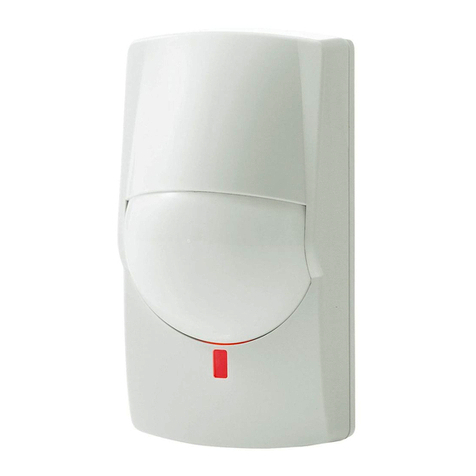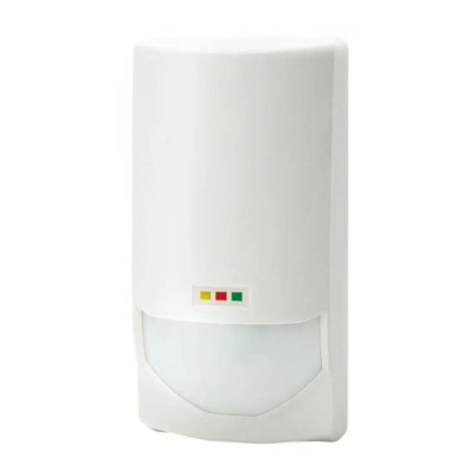
ENGLISH
REACTION TWO
5916233 FEB 2023
Disregard of warning may cause the improper operation causing death or serious injury of
a person.
Special attention is required to the section of this symbol.
Disregard of caution may cause the improper operation causing injury of person or damage to
objects.
Read this operation manual carefully before use to ensure proper operation of this product.
Failure to read this operation manual may cause improper operation and may result in serious injury or death of a person.
The meanings of the symbols are as follows. Please study the following first and then read the contents of this operation
manual.
1. This sensor is a non-contact switch intended for header mount/ceiling mount of an automatic door.
Do not use for any other applications.
2. When setting the sensor's detection area, make sure there is no traffic around the installation site.
3. Before turning the power ON, check the wiring to prevent damage or malfunction of equipments
that are connected to the sensor.
4. Only use the sensor as specified in the operation manual provided.
5. Be sure to install the sensor in accordance with the local laws and standards of the country in
which the sensor is installed.
6. Before leaving the job site make sure that the sensor is operating properly and instruct the building
owner/operator on proper operation of the door and the sensor.
7. The sensor setting can only be changed by an installer or service engineer. When changed,
register the changed setting and dates in the maintenance logbook accompanying the door.
The following conditions are not suitable for the sensor installation.
- Vibrating header or mounting surface.
- Waterdrops or snow on the sensor.
- Moving objects, steel plate, emergency lights or illumination in the detection area or in vicinity.
Manufacturer's statement
WARNING
CAUTION
NOTE
NOTE
NOTE
Do not wash, disassemble, rebuild or repair the sensor, otherwise it may cause electric shock or breakdown of the
equipment.
Danger of electric shock
WARNING
0
30
30
1. Antenna
2. Sensitivity potentiometer
3. Mounting holes
4. Dipswitches
5. Wiring hole
6. Narrow lens
7. Operation indicator
8. Terminal block
9. Cover fixing
6*
12
3
4
3
8
5
7
5 3/16"(131)
2 3/8"(61)
2 3/16"(55)
9
[inch(mm)]
* Narrow lens is stored at
the back of housing cover.
3 13/16"(97)
Dimensions and part names
: REACTION TWO
: Black/Silver
: 6'7"(2.0 m) to 11'5"(3.5 m)
: Microwave doppler effect
: 24.125 GHz
: < 20 dBm
: See Detection area
: +10° to +70°(Header mount)
+20° to +80°(Ceiling mount)
: 30° to left or right
: 12 to 24 VAC (±10%)
12 to 30 VDC (±10%)
: < 1.5 W (< 2 VA at AC)
: 1 15/16"(5 cm)/s
: Green : Stand-by
Red : Detection
Green blinking : Set-up
Model
Cover color
Mounting height
Detection method
Power frequency
Power density
Detection area
Vertical adjustment
Horizontal adjustment
Power supply
Power consumption
Minimum speed
Operation indicator
Output
Output hold time
Response time
Operating humidity
Operating temperature
IP rate
Weight
Accessories
: Form C relay
50 V 0.3 A Max.(Resistance load)
: 2.0 s/4.0 s
: < 0.3 s
: < 80%
: -4°F to 131°F(-20°C to +55°C)
: IP54
: 4.9 oz(140 g)
: 1 Cable 9'10"(3 m)
1 Operation manual
2 Mounting screws
1 Mounting template
1 Narrow lens*
* At the back of housing cover
The specifications herein are subject to change without prior notice due to improvements.
Specifications
NOTE
Hook the cover on the left side of main
body to place the cover.
If wiring is to be exposed, break the
knockout.
Make sure to connect the cable correctly to the door controller before turning the power ON.
The sensor does not detect objects for 10 s after supplying power.
a. Affix the mounting template at the desired mounting position.
b. Drill 2 mounting holes of ø1/8" (ø3.4 mm).
c. To pass the cable through to the header, drill a wiring hole of ø5/16" (ø8 mm).
d. Remove the mounting template.
e. Remove the housing cover with screw driver as shown below. Attach the sensor to the mounting surface with 2 mounting
screws.
a. Plug the connector of the sensor.
b. Supply power to the sensor and the sensor will automatically start the set-up mode with blinking Green.
c. Adjust the detection area and set the Dipswitches. (See Adjustments)
2
Open
1
Insert
Screw driver
Cover fixing
3
Slide
Screw driver
Power supply
12 to 24 VAC ±10%
12 to 24 VDC ±10%
Relay
N.O.
N.C.
Red
Black
White
Green
Installation
1. Mounting
Wire the cable to the door controller properly as shown below.
2. Wiring
Before starting the procedure,
ensure that the power is turned
OFF. When passing through
the cable to the hole, make sure
not to tear the shield, otherwise
it may cause electric shock or
breakdown of the sensor.
Danger of electric shock
WARNING
Do not use the sensor without the cover. When using the cable knockout,
install the sensor indoors or use the rain cover (separately available)
otherwise electric shock or breakdown of the sensor may occur.
Danger of electric shock
WARNING
3. Turn ON the power
NOTE
4. Mounting the cover
H
M
L
To obtain narrow area, place the narrow lens attached at the back of the cover.
To place the narrow lens, follow step1 & 2 as shown on the right.
Set dipswitch 1 & 2 to enable the direction recognition.
2
1
When the sensor is mounted at higher than 9'10"(3.0 m), set the sensitivity to "H (high)".
Adjust the detection area with sensitivity potentiometer.
13′1"
(4000)
13′1"
(4000)
L H Mounting height
: 7'3"(2.2 m)
Vertical adjustment
: +34°
Wide area
H
M
[feet,inch(mm)]
L
Mounting height
: 7'3"(2.2 m)
Vertical adjustment
: +34°
3′3"
(1000)
6′7"
(2000)
9′10"
(3000)
13′1"
(4000)
0
6′7"
(2000)
6′7"
(2000)
9′10"
(3000)
9′10"
(3000)
3′3"
(1000)
3′3"
(1000)
Narrow area
[feet,inch(mm)]
3′3"
(1000)
6′7"
(2000)
9′10"
(3000)
13′1"
(4000)
06′7"
(2000)
6′7"
(2000)
9′10"
(3000)
9′10"
(3000)
3′3"
(1000)
3′3"
(1000)
0
30
30
0
30
30
0
30
30
Vertical
adjustment
Horizontal
adjustment
Adjustment Scale
Side view
Front view
Front view Front view Front view
Side view
+70°
+10°
+20°
+80°
Header Ceiling
+30°
+30°
Angle
0°
30°
30°
5° X 12 steps
3° X 20 steps
: Detection : Non-detection
Door
Detection
area
12
12
12
12
Bi-direction(Bi)
Bi-direction
Uni-direction(Uni)
Uni-direction with Auto
-caution mode*(ACM)
When dipswitch 1 is set to OFF,
Bi-direction mode is effective,
regardless of dipswitch 2 setting.
Dipswitch 4 : Immunity
4
If there is external
interference, set
dipswich 4 to "ON".
Dipswitch 3 : Output hold time
33
4.0 s2.0 s
* Auto-caution mode : A person wavering in the detection area to be detected.
Adjustments
1. Detection area
2. Detection area angle adjustment
3. Narrow area
4. Dipswitches settings
10° 10°10° 10°
43° 43°
NOTE
Do not touch electric part of the sensor to avoid possible breakdown of the sensor.
CAUTION
Problem Possible countermeasures
Set to the stated voltage.
Door does not open
when a person
enters the detection
area.
Check the wiring and terminal block.
Set the sensitivity higher.
Check Adjustments.
Wait for the set-up to complete.
Possible cause
Wrong power supply voltage.
Wrong wiring or connection failure.
Sensitivity is too low.
Wrong detection area positioning.
The sensor is being set up.
Operation
indicator
None
Unstable
Green
Green blinking
Check the wiring and terminal block.
Set the sensitivity lower.
Set Dipswitch 1 to "ON". Or dipswitch 4 to
"ON".
Door opens when
no one is in the
detection area.
(Ghosting)
Wipe the housing cover with a cloth.
Door remains open.
Adjust the detection area away from the door.
Or set dipswitch 4 to "ON".
Wrong wiring or connection failure.
Sensitivity is too high.
Water drops on the housing cover.
The detection area is overlaping
with the door.
Raining or snowing.
Red
Green
Troubleshooting
1. Always keep the cover clean. If dirty, wipe the housing cover lightly with a cloth. Do not use any cleaner or solvent.
2. Do not wash the sensor with water.
3. Do not disassemble, rebuild or repair the sensor yourself, otherwise electric shock may occur.
4. Always contact your installer or service engineer when changing the settings.
5. Do not paint the housing cover.
1. After applying power, wait 10 s then walk test detection area to ensure proper operation..
2. Do not place any objects that move or emit light in the detection area. (e.g. Plant, illumination, etc.)
Inform building owner/operator of the following items
WARNING
NOTE
Check the operation according to the chart below.
Checking
Sensor status
Green Red
Output contact
Stand-by
Operation indicator
Power OFF
OFF
Detection
Set-up
(Approx. 10 s)
Green blinking
